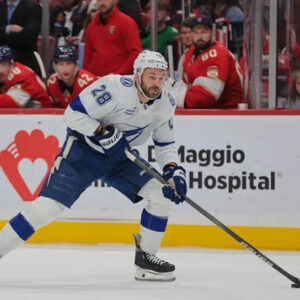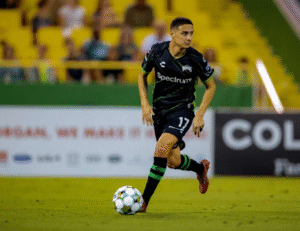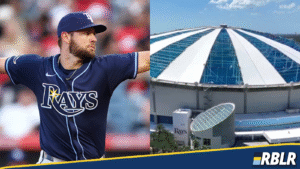RBLR Rays Roundtable #18 – Durham Developments and Deadline Dealing

This week, our writers took a look at a pair of players who have made some strides in Durham this year. We also looked ahead to the trade deadline and what moves (if any) the team could make.
Jacob Macauley (@raysfarmreport) : Covering for M-Rod
Manny Rodriguez had become a fixture as the second-highest leverage RHP for the Rays this season. But on Wednesday, Rodriguez landed on the 15-day injured list due to what the Rays call a right forearm strain. Manager Kevin Cash doesn’t seem too worried about the injury, saying: “I’m hoping and I’m still optimistic that it’s going to be a shorter stint.”. So, who do the Rays turn to if this ends up being a potential long-term issue?
Paul Gervase: the Rays acquired the 25-year-old right-hander from the New York Mets at last year’s MLB trade deadline in exchange for Tyler Zuber, and all Paul has done since joining the Rays organization is rack up swing and miss. During his time with the Rays, Gervase has struck out 40% of the batters he has faced – which would put him up with Mason Miller and Josh Hader in comparison to Major League arms. Gervase primarily gets it done with 3 offerings: a FF, FC, and ST. Paul’s big swing and miss pitch, surprisingly enough, is the FF, leading the way amongst his offerings at a 34.4% whiff rate, ranking him in the 95th percentile among major league arms. To most, it would be surprising that an average 93 (perceived 95) MPH fastball would challenge hitters this much, but his 99th percentile extension off the rubber and plus movement help him miss bats. If Rodriguez were to be sidelined for extended time, don’t be surprised if the Rays eventually call up the young right-hander to see if he can fulfill a high-leverage role.
Dustin Teuton (u/FLBoy19) : Carson Williams is starting to figure it out
I’ve always been bullish on Carson Williams. Even with the swing-and-miss concerns, I still believe he has legitimate All-Star, even MVP-vote potential. With platinum glove defense, 20+ HR power, and plus speed at shortstop, he offers one of the highest floors in the minor leagues. Even if the bat only comes halfway, he still profiles as a 2-3 fWAR regular. And the Evan Longoria comparisons – both in leadership and work ethic – are more than just surface-level.
That said, AAA has been a challenge. Through April and May, pitchers attacked him with off-speed and breaking stuff, and it showed. He struck out nearly 38% of the time while hitting just .168. Still, the power remained intact with a .178 ISO. His 27.6% chase rate – right in line with Jonathan Aranda’s – sits around league average and has helped sustain a solid 12% walk rate, aided by the ABS challenge system, which is likely to arrive in MLB soon. His 75.6% zone contact rate is serviceable, but his 34% out-of-zone contact rate is weak, and a 3.8% uptick in whiff rate has pulled his overall contact rate down to 62.8%.
But June has brought signs of real progress. Over 43 plate appearances, Williams is slashing .306/.405/.988 with 3 HR, 3 SB, an 11.6% walk rate, and – most importantly – a 19.4% strikeout rate. It’s early, but encouraging. His issues have never been mechanical; scouts have consistently pointed to pitch recognition. That’s something that often improves with age and reps, especially for a 21-year-old facing much older and experienced arms.
If he can maintain a K rate in the 25–28% range, everything else starts to fall into place. The raw tools have always been there and now he’s starting to make the adjustments. If that continues, a 2026 MLB debut is firmly in play, and so is the lofty ceiling that’s been projected from the start.
Jake Shutters (@JakeShutters) : The “internal” acquisitions
It’s always hard to predict what the Rays front office will do at any occasion. Going unconventional has been a staple of the Neander front office, as the team rarely makes the big all in push or gets the big fish on the trade market, much to the yearly disappointment of Rays fans. This year is particularly hard to predict, as the Rays sit with a 51.7% chance to reach the playoffs on June 14th, per fangraphs. A team in this position usually makes some sort of push for the playoffs, overpaying for veteran talent getting floated away by sellers. The question with this Rays team, however, is do they even need to?
Maybe the Rays consider Shane McClanahan, Richie Palacios, Ha-Seong Kim, and Jonny DeLuca their additions, as those 4 are concrete major league pieces who would immediately upgrade the positions they would be occupying on the major league roster. Adding Shane McClanahan to any rotation is a major upgrade, as long as his health cooperates. Ha-Seong Kim increases the floor of the shortstop position vastly, as instead of a well below average hitter who plays elite defense in Taylor Walls, the Rays will be plugging in an at least league average hitter who plays elite defense in Kim. Palacios is an upgrade over Jake Mangum and DeLuca is an upgrade over Misner. Walls, Mangum, and Misner can be usable on a major league roster, but the players the Rays will be getting back from injury can act as their “trade deadline” upgrades.
However, it is likely the Rays will move on from a starting pitcher, likely impending free agent Zack Littell. Due to the eventual return of McClanahan, as well as Joe Boyle and Ian Seymour in Durham ready to contribute. The Rays have already acquired their replacement for Ben Rordvedt in Matt Thaiss, and with injury returns on the horizon, there’s not too much room to add on the roster without unnecessarily taking someone’s spot. The Rays will be better on August 1st than they are today, and they potentially have to make zero external adds to do so.
The RBLR Rays Roundtable is a weekly collection of analysis, insight, and perspectives from a cast of writers assembled because of their unique backgrounds and experience. Check this space weekly for new updates and features covering the Tampa Bay Rays, the Rays’ minor league prospects, and more!






